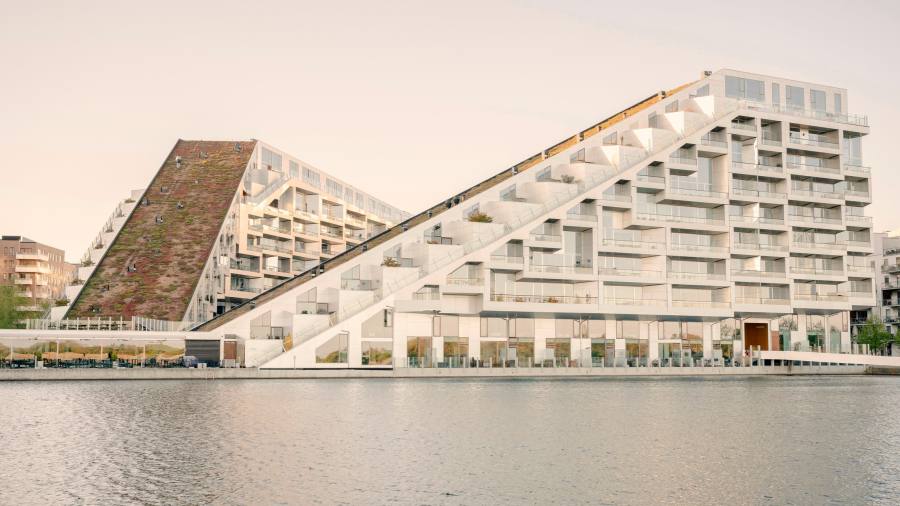
This article is part of FT Globetrotter’s guide to Copenhagen
Bjarke Ingels is one of the stars of modern architecture. His bold, contemporary designs can be found from Via 57 West in New York, Google’s headquarters in Silicon Valley and the Lego House in Jutland to the MÉCA cultural centre in Bordeaux and the Iqon residences in the Ecuadorean capital of Quito.
But there is nowhere better to see the work of his BIG (Bjarke Ingles Group) practice than in his hometown of Copenhagen. This cycling route takes in nine of his best pieces in the Danish capital — but there are more to explore, especially the Panda House at Copenhagen Zoo.
This 28km route is short enough to do in a morning or afternoon, but it can easily take a full day to explore all his creations. It’s also simple to break the route in two in the centre of town if time is tight.
The route
We begin at 8Tallet (8 House), Ingels’ radical design for 476 apartments to the south of the city that in 2011 won the best housing award at the World Architecture Festival. The easiest way to get here is to take the metro to Vestamager (you need to buy a special bike ticket, but they are not allowed on trains during the Monday-Friday rush hours of 7-9am and 3.30-5.30pm): the building is about 400m south-west of the station. The striking building, blending offices, retail and homes in one seamless, radical whole, is best appreciated from the south across a lake. In common with many of his designs, privacy is at something of a premium for residents, so a sign warns visitors to look around only between 10am and 4pm on weekdays. The houses join up in a figure of eight, hence the name, and the zigzag ends are particularly impressive.
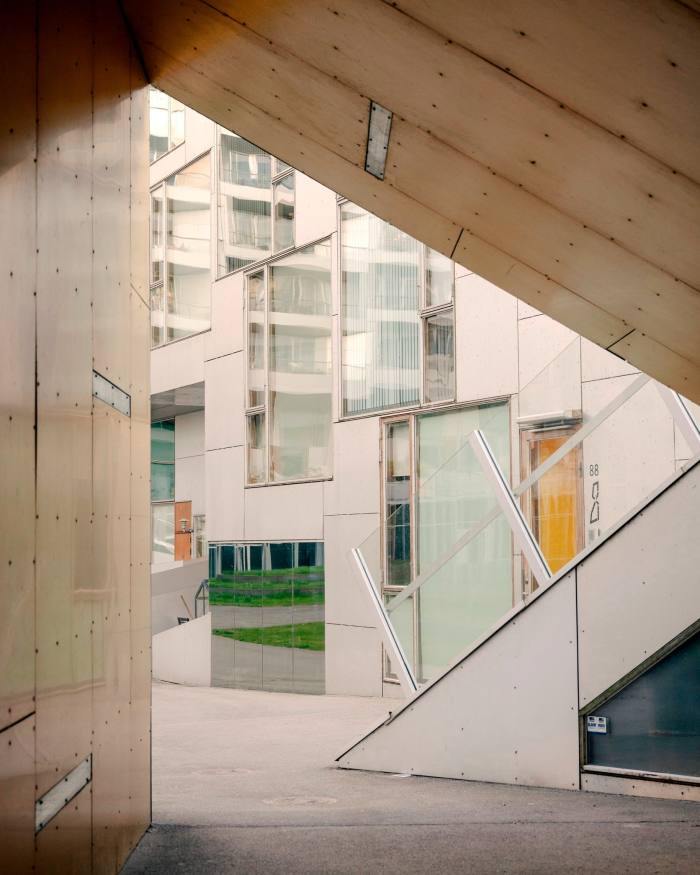
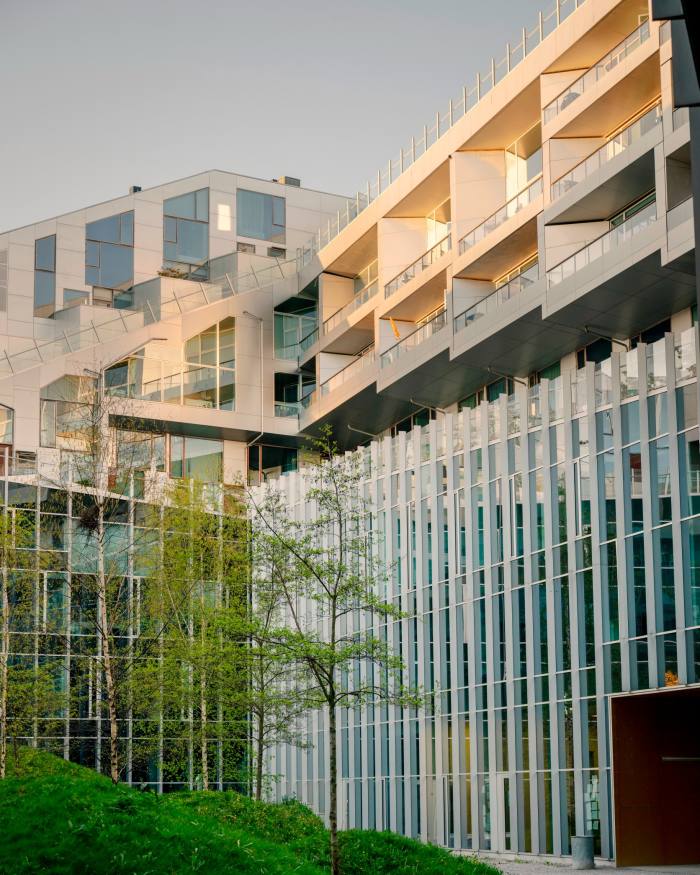
Our route proper starts on the south side of the water. Head east along the path, and then north when you hit a main road, keeping the metro line to your left. Two kilometres along you reach BIG’s next two crazy housing designs, which neighbour each other: VM Husene (VM Houses) and Bjerget (Mountain Dwellings). The latter in particular looks most spectacular from the track to the east of the canal, and highlights the cascading mountainside effect BIG was trying to achieve (the other sides with their mountain murals or glimpses of a car park were less successful for me). The V and M Houses, so called because their footprints resemble the letters, have glass facades, allowing you to peer, voyeur-like, into the apartments, replete with their spiky balconies. The transparency rather unsettled me; some residents had stuck up torn bin bags to block out prying eyes.
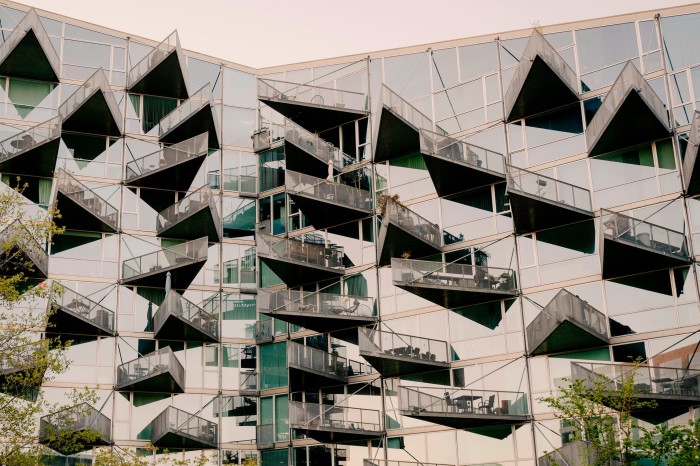
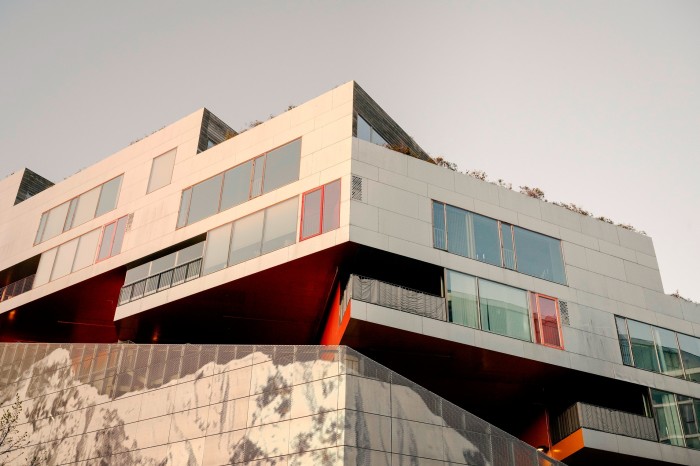
Head underneath the metro line, across the boulevard and continue for 500m until you meet the next big road. Turn north, and in about 700m you will cross another busy road to enter Amager Fælled (Amager Common), a nature reserve that was once a military area. There are plenty of tracks across it but stick to those meant for bikes. (If you don’t fancy riding on dirt tracks, stay on Ørestads Boulevard to the east before cutting back to the harbour.)
Exiting the common to the west, you will soon be going over two of Copenhagen’s eye-catching bike bridges — first, the more conventional Bryggebroen, before the modern, sleek Bicycle Snake. Although the curving form of the latter is meant only for cyclists, you’re probably likely to bump into walkers wanting to enjoy its charms. The bridge ends at the Fisketorvet shopping mall — look up and you’ll see the frankly wacky shape of Kaktustårnene (Cactus Towers), BIG’s latest residential development, whose prickly exterior seems to divide opinion more than any of the others.
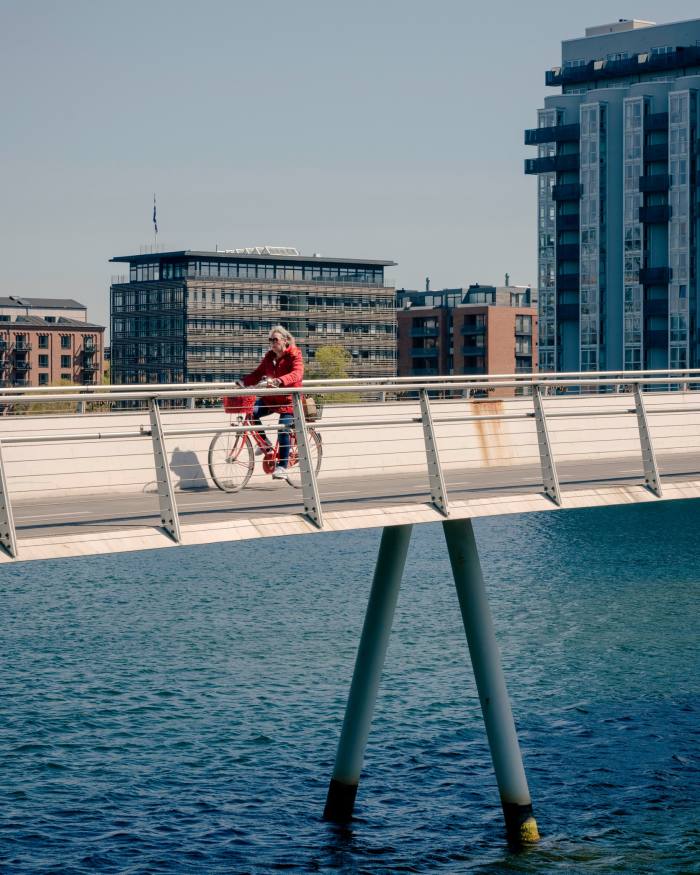
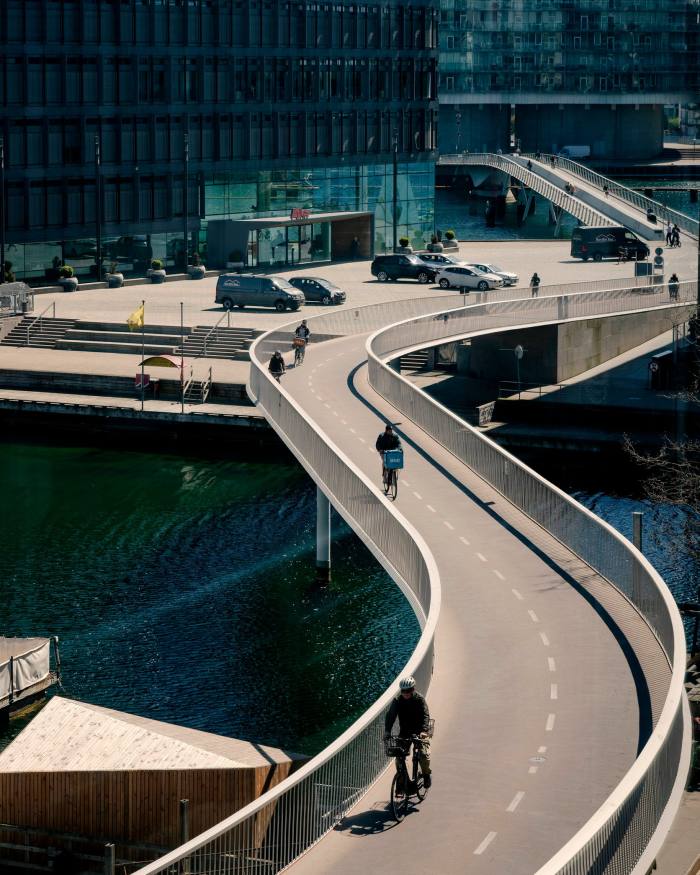
The next part of the route is somewhat fiddly. Head back across the Bicycle Snake and immediately take a sharp right and retrace your path under the bridge almost back to Fisketorvet, before taking a right through the middle of the Copenhagen Island hotel — designed by the son of the Danish architect of the Sydney Opera House — to follow the Havneringen (Harbour Circle) route north. Cycle along it for two kilometres on the western edge of the harbour, taking in the waterside views. Pass under the Langebro car bridge and instead take the Lille Langebro (Little Long Bridge) bike bridge immediately afterwards. Head back on yourself on the opposite bank of the harbour until you reach Islands Brygge Harbour Bath, the first place in Copenhagen to open up for the now highly trendy harbour swimming and a great place to bathe on warm days. The structure could do with lick of paint, although there are some typically playful BIG touches.
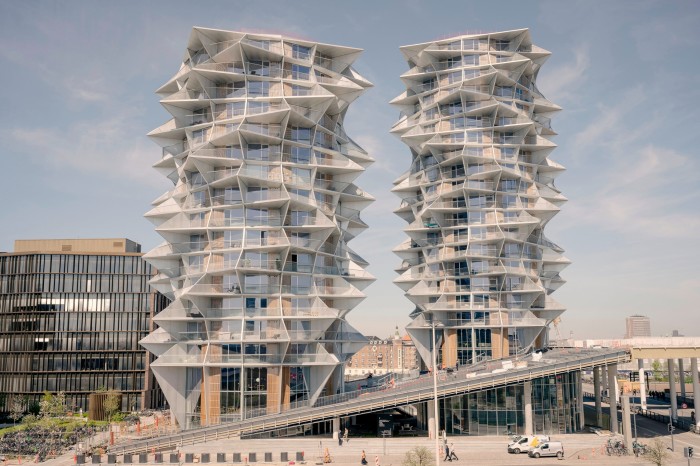
Retrace the path back to the Lille Langebro bridge and head east. The route goes along the pretty streets of Dronningsgade and Prinsessensgade as we head north, sticking to the outskirts of Freetown Christiania. (The hippy community, well known for its open drug trade, is best avoided as there have been protests against cyclists and recent violence there.) Once you hit a canal, turn sharp right and follow the path through the end of the freetown and over Dyssebroen.
Turn left on to a road by a mass of football pitches, and the next (and biggest) BIG monument looms into view. CopenHill is a genius idea — take the industrial ugliness of a waste-to-energy plant and turn its long sloping roof into an artificial ski slope. In a country whose highest point is just 171 metres above sea level, it is a very welcome amenity (as is the huge climbing wall on one side). It is well worth stopping to take the lift (for free) through the bowels of the plant to the top and walk back down (hardcore fitness freaks run up and down a special mountain path or steps to the side of the slope).
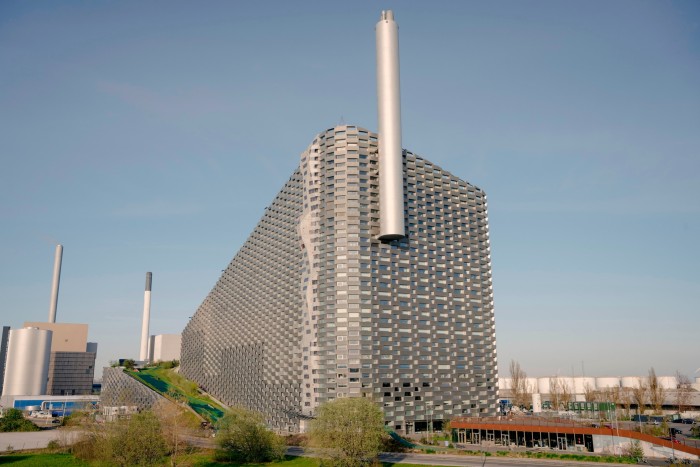
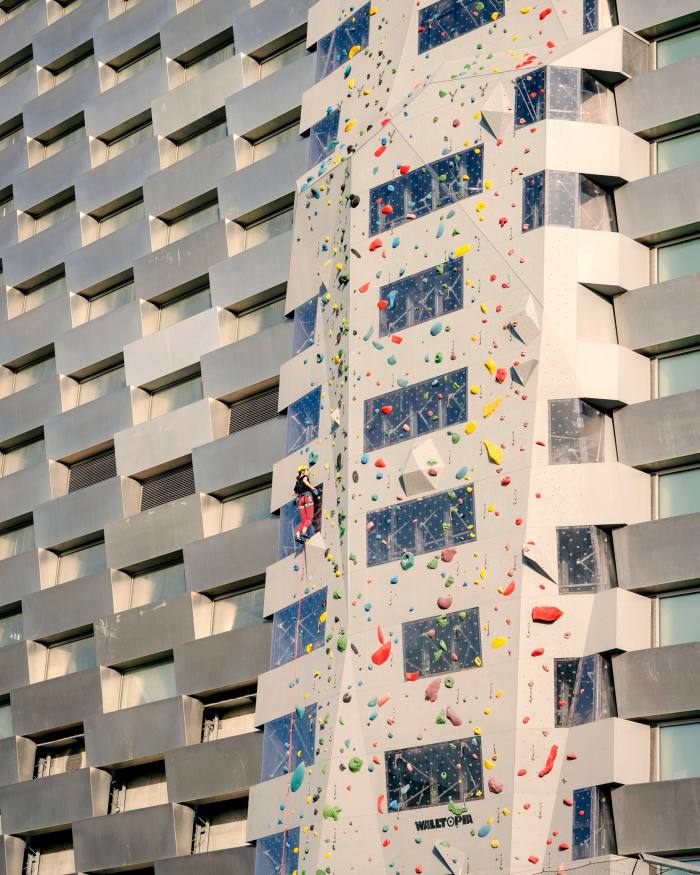
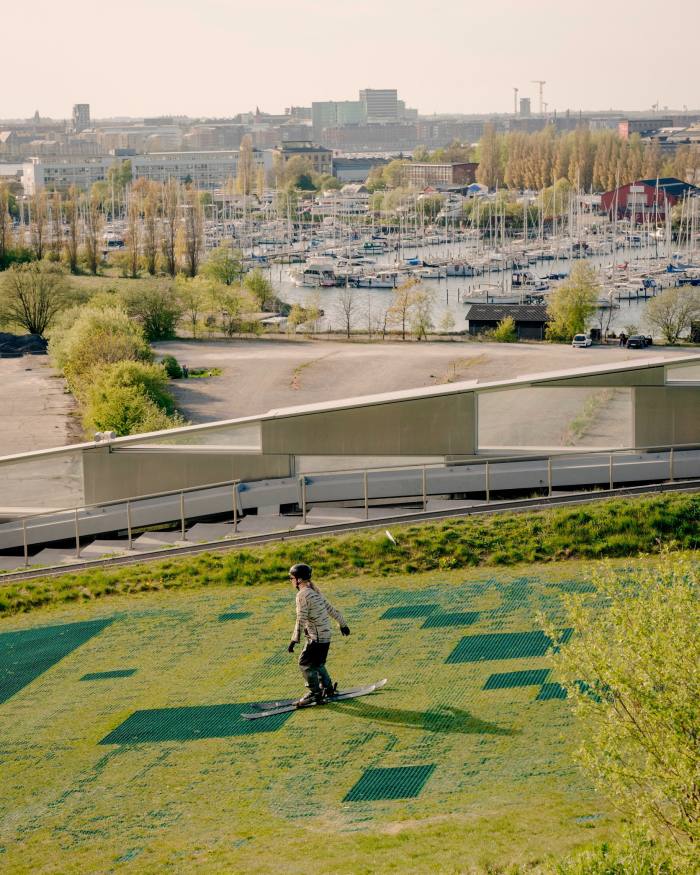
Head from CopenHill back to the main road you came from, and turn right before taking a left after several hundred metres to follow the water. At the next curve in the road, the second incarnation of Noma, aka the world’s best restaurant, which was also designed by BIG, stands unobtrusively looking back towards CopenHill. Unless you’re lucky enough to have a reservation, carry on the road, bearing left twice to start heading south. Appropriately enough, you pass the Royal Danish Academy for architecture and will see the modern Opera looming on your right.
Shortly after you pass over a canal, turn right and go over Trangravsbroen, the three-way “Butterfly Bridge”. The small area before you take the next, longer bridge (Inderhavnsbroen) is home to plenty of potential lunch options: Broens Gadekøkken is a popular area of street-food stalls such as Gasoline Grill, Poulette, Hija de Sanchez and many more; behind it lie Popl Burger and Barr, both Noma spin-offs.
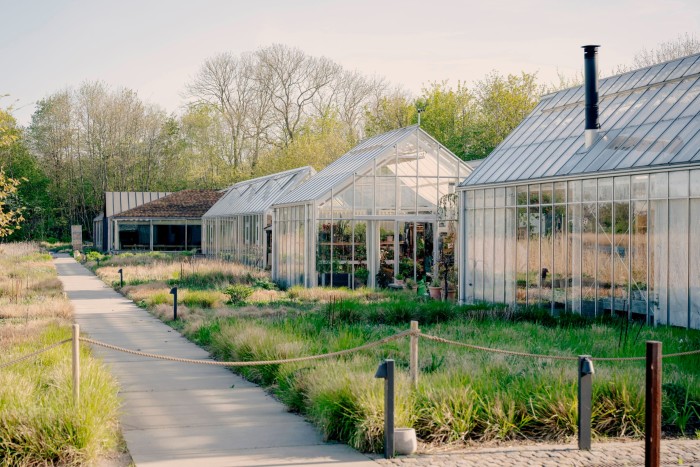
Once over Inderhavnsbroen, take the picturesque street of Nyhavn (on the opposite bank of the canal to the tourist hordes) to the city’s main square, Kongens Nytorv. For those wanting to break up the route, this is a good place to do so, with plenty more restaurants, hotels and shopping close by. Try not to stop on Nyhavn itself to take a picture, though, as it’s a fast cycling street for locals — park your bike at the square and walk down the other, pedestrianised side to soak up the atmosphere if you want. Otherwise, head north-west along the top edge of the square, and with almost no deviation cycle straight for the next four kilometres, over the central lakes and through the multicultural neighbourhood of Nørrebro.
Almost at the end of Nørrebro, we reach the colourful and remarkable Superkilen park. Full of dozens of objects chosen by immigrants from their home countries (such as a Jamaican sound system, a Thai boxing ring and, most movingly of all, some Palestinian soil picked by two young girls), it’s an admirable attempt to try to include a community in a regeneration project. But more than a decade old, it’s starting to show its age — as with several of BIG’s Copenhagen projects, it could do with some TLC from the city authorities.
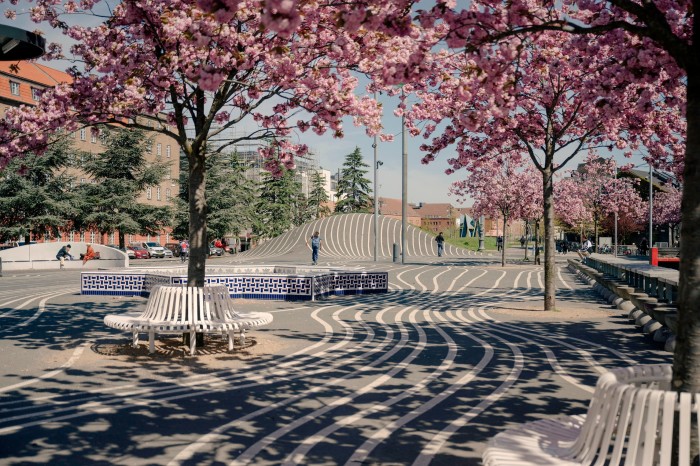
On exiting the park, turn right before heading left on to Jagtvej, a main thoroughfare that the route follows for the next three kilometres, almost to our endpoint in Nordhavn. Once the prime ferry and container ship harbour for Copenhagen, the area is being revitalised with spectacular architecture (mostly not from BIG), as well as expanding the city into the sea.
Nordhavn is still very much under construction, so it’s worth paying attention to signs on the ground as well as the digital map as you plot your way to our final destination: BIG’s soon-to-be headquarters at the end of a spit of land. As of the time of writing, work is still going on at the building but it is due to be finished this autumn. Buy an ice cream or cold drink and wander around the district’s many striking buildings, many of which definitely owe a nod to Bjarke Ingels and his revitalisation of Danish architecture.
What’s your favourite BIG building in Copenhagen? Tell us in the comments below. And follow FT Globetrotter on Instagram at @FTGlobetrotter
Cities with the FT
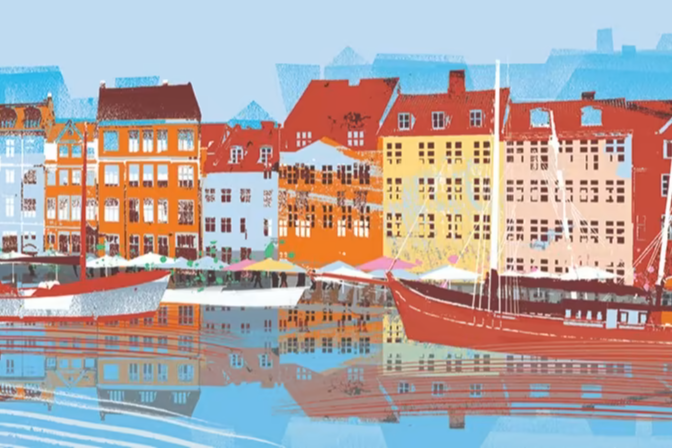
FT Globetrotter, our insider guides to some of the world’s greatest cities, offers expert advice on eating and drinking, exercise, art and culture — and much more
Find us in Copenhagen, London, Hong Kong, Tokyo, New York, Paris, Rome, Frankfurt, Singapore, Miami, Toronto, Madrid, Melbourne and Zürich